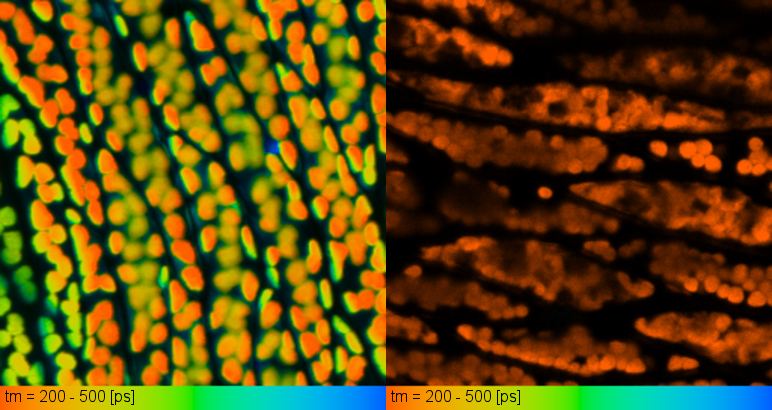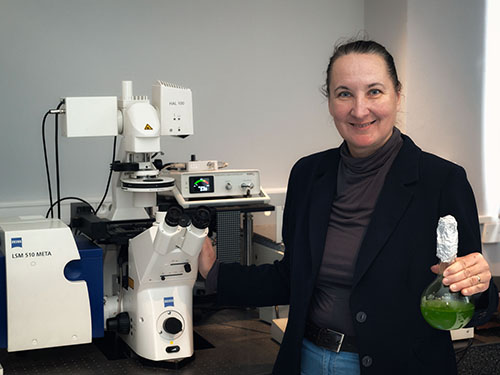Overview
Environmental pollution is the major issue of the 21st century. Pollution by heavy metals, acid rains (pH), and lately also micro-plastics together with the modification of illumination conditions belongs to significant environmental stressors. These stressors subsequently affect living organisms in their environment, including algae and/or or moss functioning and their photosynthesis. Monitoring rapid responsiveness of the algae and moss endogenous fluorescence (autofluorescence) under environmental stressors presents non-invasive approach aiming to comprehend underlying metabolic changes in stressed living cells and is a prerequisite for understanding their pathophysiological changes. Among the brightest endogenous fluorophores inside biological organisms are NAD(P)H and flavins in mitochondria and chlorophylls in chloroplasts. These molecules are the main electron donors and acceptors in the biochemical processes such as oxidative phosphorylation, or photosynthesis. Fluorescence lifetime imaging (FLIM) enables advanced evaluation of the sensitivity of endogenous fluorophores to their environment. Consequently, it brings potentially very useful information for examination of changes, namely in the chlorophyll-producing organism responsiveness, to the stress conditions. We will discuss different issues of the use of spectrally and time-resolved imaging by confocal microscopy and FLIM in environmental studies, presenting examples on sweat water algae Chlorella sp., marine algae Dunaliella, as well as Fontinalis antipyretica moss leaves. Deep understanding of algal and moss responses to their stressors is essential to predict how ecosystems may be affected by the climate change and other human activities. This project is supported by LASERLAB-EUROPE V (grant agreement no. 871124, European Union’s Horizon 2020 research and innovation programme).

About the speaker
Alzbeta Marcek Chorvatova studied biophysics and chemistry physics at the Faculty of Mathematics, Physics and Informatics, Comenius University in Bratislava, Slovakia and obtained doctoral degree in Physiology at Univ. Claude Bernard Lyon-1, France. After performing 2 post-docs, she founded and lead for 7 years a laboratory at CHU Sainte-Justine Montreal in Canada. Currently, she is the head of the Department of Biophotonics at the International Laser Center in Bratislava and a full professor and the head of the Department of Biophysics at the Faculty of Natural Sciences of the University of St. Cyril and Methodius in Trnava, Slovakia. Prof. Marcek Chorvatova´s scientific efforts are focused on metabolic processes in living cells (both in the animal and the algae and moss ones), investigated by means of their autofluorescence. Evaluation of changes in this natural endogenous fluorescence using spectral imaging and FLIM allowed to monitor non-invasively pathophysiological changes in animal and human cells, as well as the capacity of algae or moss to react to environmental pollution.



